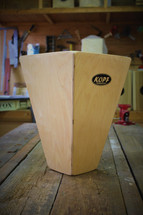Posted by Steve Head on 3rd Apr 2023
All About The Essential Cuban Cajon Drum
The cajon is a versatile percussion instrument that originated in Peru and has been used in many different musical genres around the world. In Cuba, the cajon has a particular style that has been adapted to the country's unique musical traditions. Cuban cajons have a distinct sound and design that reflects the country's cultural heritage.
A cajon is essentially a wooden box that is played by slapping or tapping the front surface with the hands. The sound is produced by the resonance of the box, which acts like a drumhead. Cajons are often used in acoustic settings and are popular in genres like flamenco, rock, and jazz.
In Cuba, the cajon has been adapted to the country's musical traditions, which are heavily influenced by African rhythms. The Cuban cajon is typically made from hardwood, and the front surface is covered with a thin layer of plywood or another resonant material. The top surface is often adjustable to change the tone of the instrument. Cuban cajons are usually played with the hands, although some musicians use brushes or sticks.
The Cuban cajon is often used in a style of music known as son, which is a genre of Cuban music that developed in the early 20th century. Son is characterized by its use of a small ensemble, including guitar, percussion, and vocals. The cajon is an important part of the son ensemble, providing a rhythmic foundation for the other instruments.
In addition to son, the Cuban cajon is also used in other genres of Cuban music, such as rumba and timba. Rumba is a form of Afro-Cuban music that involves singing, dancing, and percussion. The cajon is often used in the percussion ensemble in rumba, along with other instruments like congas and bongos. Timba is a more modern style of Cuban music that incorporates elements of jazz and rock. The cajon is often used in timba to provide a more acoustic and traditional sound.
The design of the Cuban cajon has evolved over time to reflect the country's cultural heritage. The instrument's shape and size have been influenced by traditional African drums, and the use of hardwoods reflects Cuba's rich history of woodworking. The top surface of the cajon can be adjusted to produce different tones, which allows the instrument to be used in many different styles of music.
Learning to play the Cuban cajon can be a rewarding experience for musicians of all skill levels. The instrument is relatively easy to learn, and there are many resources available for those who want to start playing. Local music stores often offer cajon classes or workshops, and there are many online tutorials and instructional videos available.
In conclusion, the Cuban cajon is a unique and versatile percussion instrument that reflects the country's rich cultural heritage. Its distinct sound and design have made it an important part of Cuban music, and it continues to be used in many different genres today. Learning to play the Cuban cajon can be a rewarding experience for musicians, and it offers a connection to the rich history and diversity of Cuban music.
Check out my blog post:


